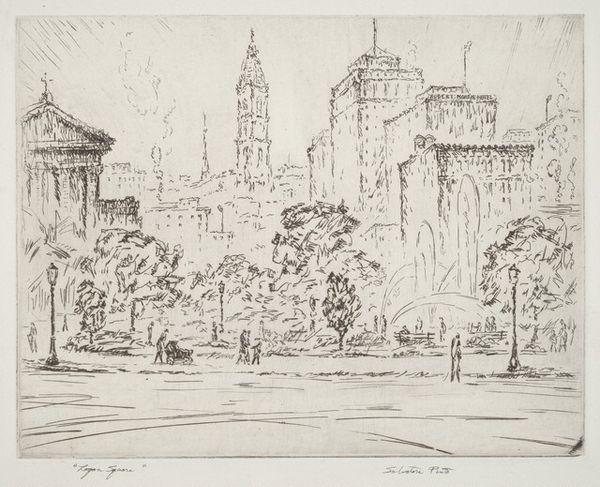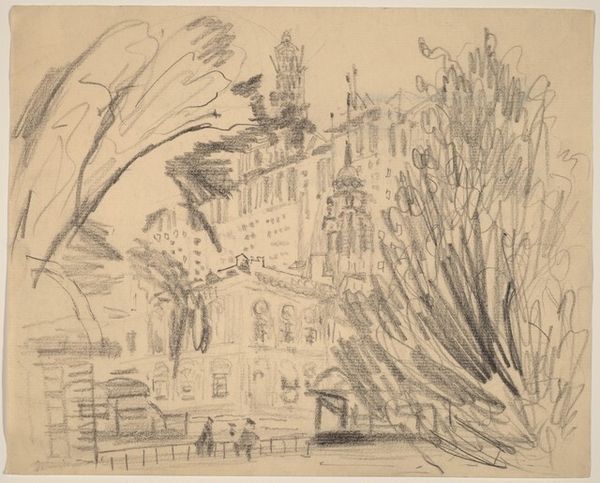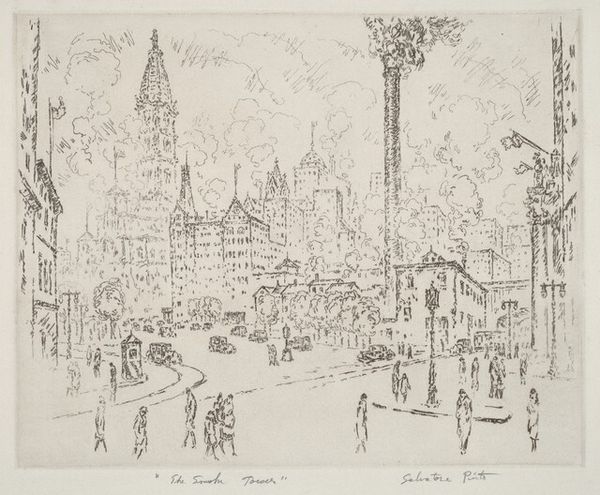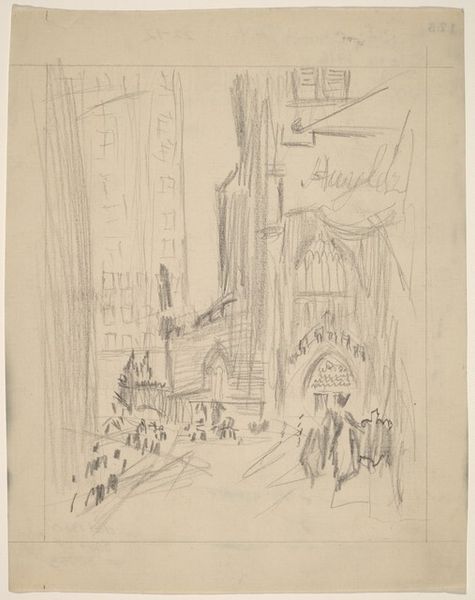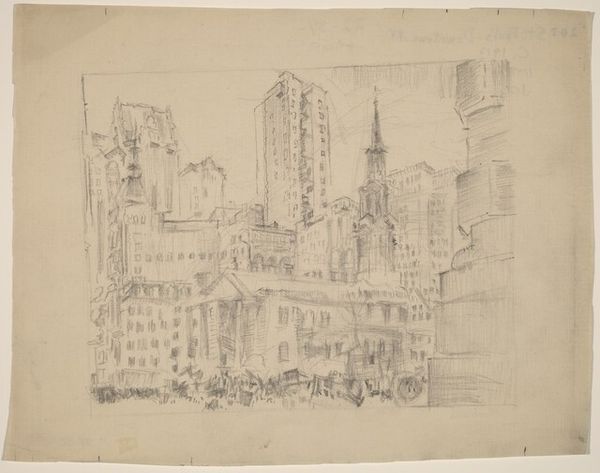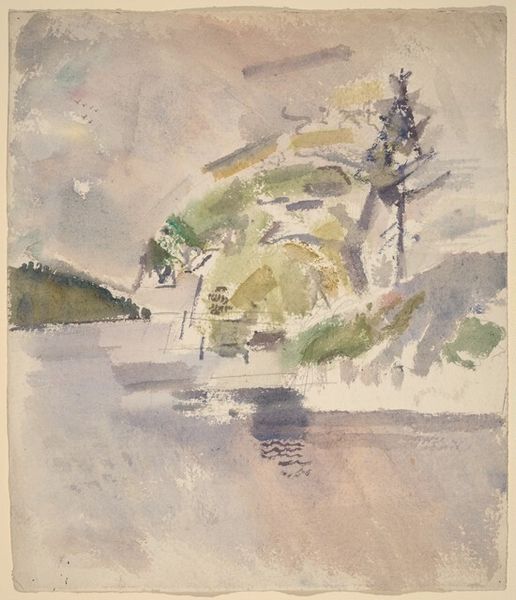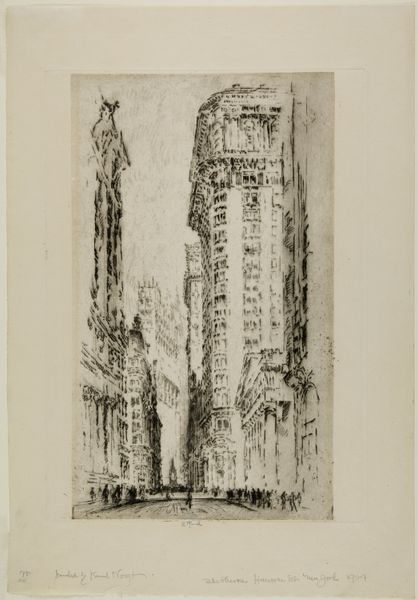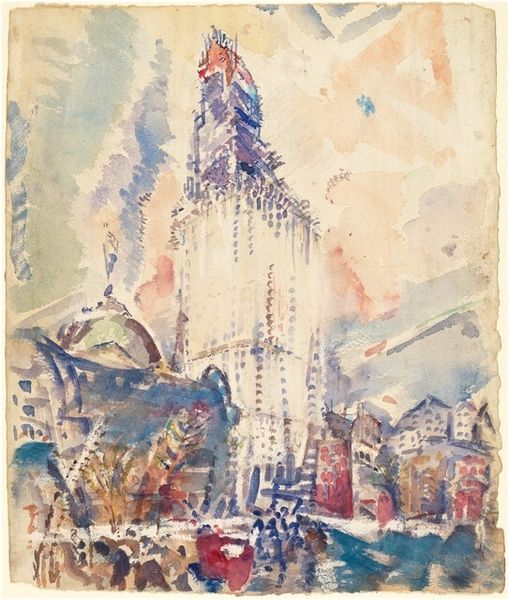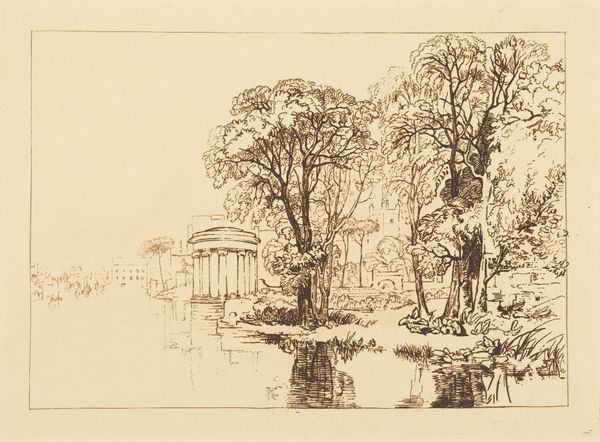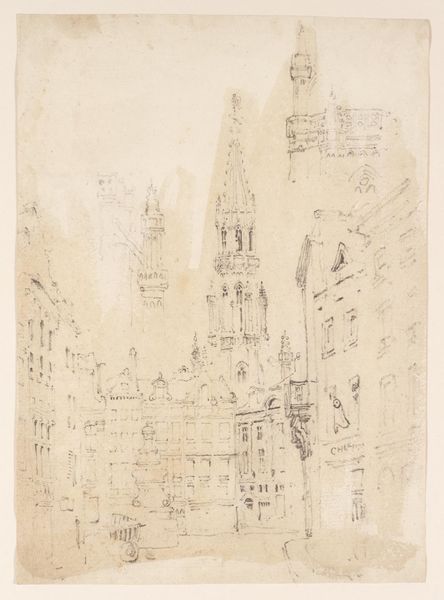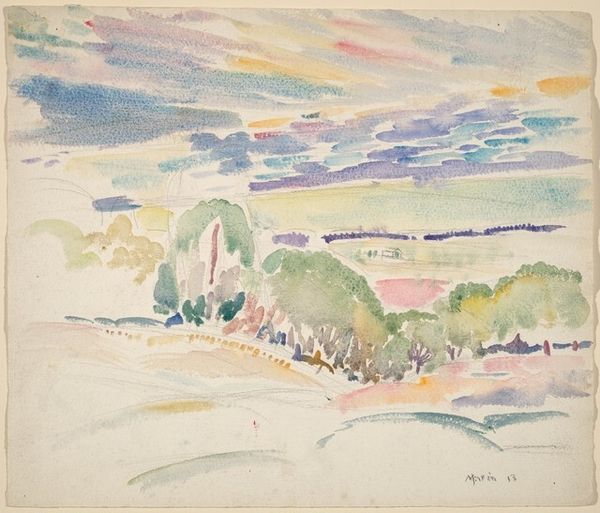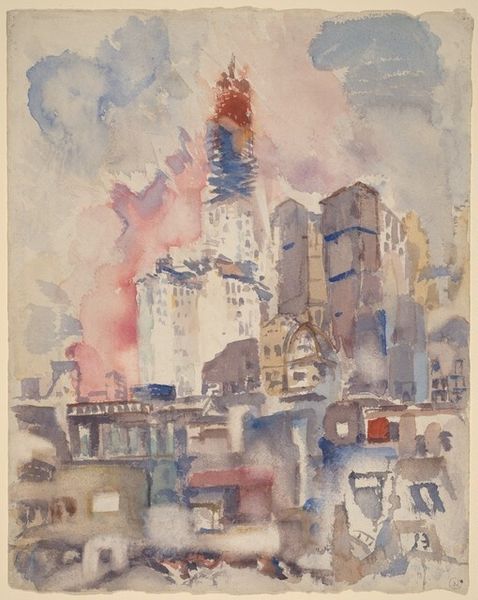
Dimensions: overall: 28.8 x 39.5 cm (11 5/16 x 15 9/16 in.)
Copyright: National Gallery of Art: CC0 1.0
Curator: Standing here, we're viewing a watercolor painting titled "View of the Skyline of New York from Central Park." It's dated 1947, and the artist remains anonymous. Editor: My initial reaction is a sense of faded grandeur. The city, though present, feels distant, almost like a wistful memory viewed through a soft lens. The scale is impressive, yet it's rendered with a delicate touch. Curator: Indeed. Watercolor, in its transparency, often evokes such feelings. Look at how the anonymous artist captured the dialogue between nature and urban development. Central Park serves as this vibrant foreground against the stoic, looming skyscrapers. Symbolically, what do you think it evokes, this juxtaposition? Editor: To me, it speaks of a careful negotiation of space, a conscious attempt in post-war New York to retain green spaces, almost as a psychological refuge within rapid urbanization. The park, bustling with barely-there figures, almost asserts its claim to communal serenity against those buildings. I would argue it’s an idealistic projection, a hope that the urban life hasn’t yet devoured everything. Curator: And the hazy quality, typical of watercolor, gives a timeless aspect to the city. Note that skyscrapers – already powerful symbols of progress and capitalism in the mid-20th century – are softened, even muted by the atmospheric perspective. The iconic towers, typically symbols of human ambition, become more about atmosphere and visual impression than individual achievements. There’s something quite profound in that quiet assimilation into the landscape. Editor: It almost humanizes these structures by diffusing them in the mist. And there’s a politics in this choice, right? This kind of imagery was shaping how the public perceived the accelerated change brought by urban expansion. This piece feels like an endorsement of a harmonious balance between nature and industry – perhaps even propaganda. Curator: Interesting observation. One could argue this visual rendering supported city-planning visions during a pivotal time of reconstruction and spatial reinvention. Thank you for offering this perspective. It's truly a complex and compelling image to explore through historical lenses. Editor: Thank you for walking me through its symbology, its hazy optimism leaves one with a curious and thoughtful quiet.
Comments
No comments
Be the first to comment and join the conversation on the ultimate creative platform.
